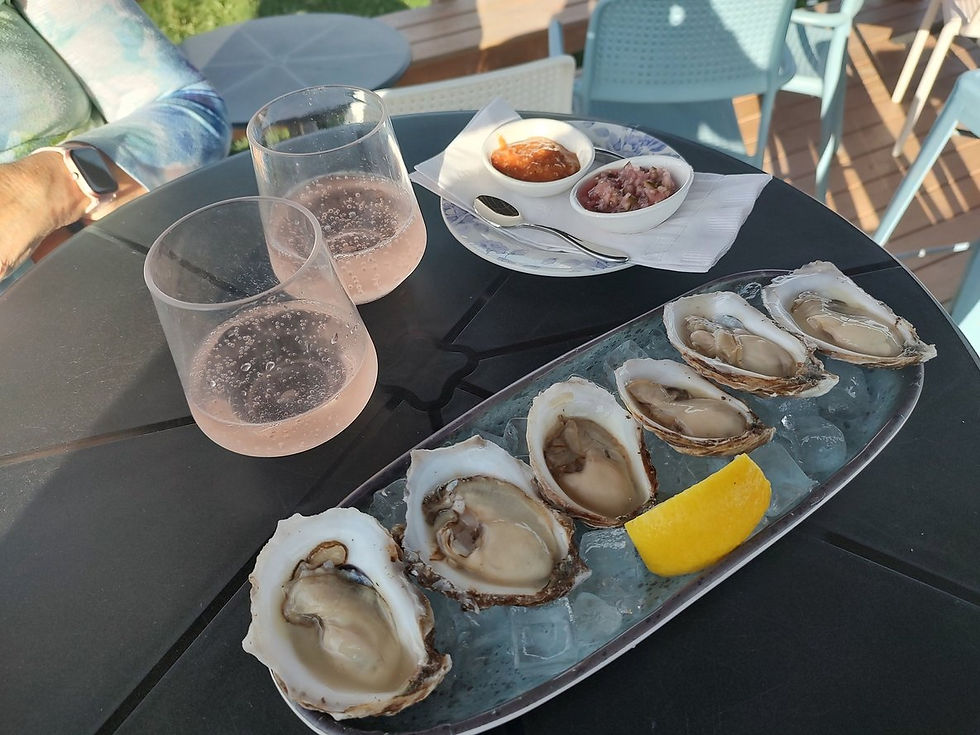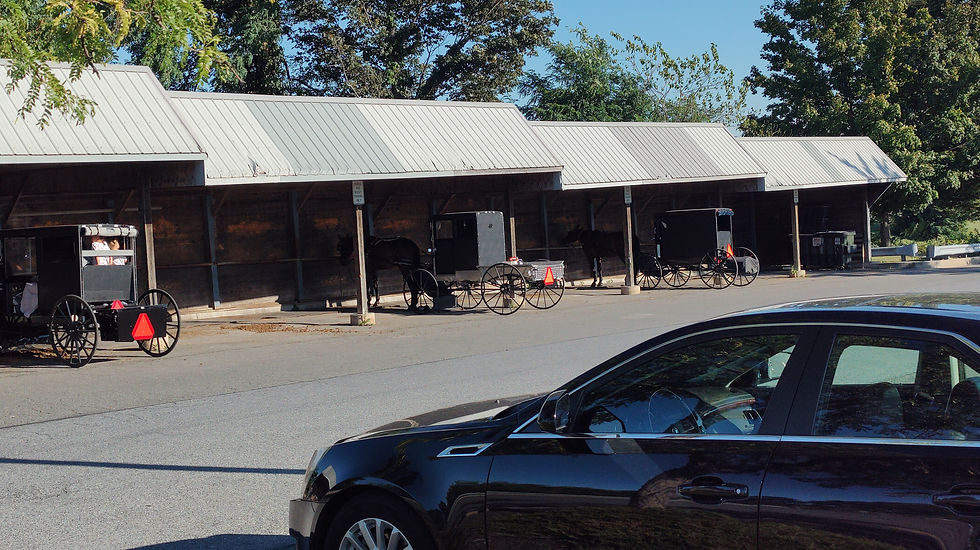Prince Edward Island
- jsbergauer1
- Jul 10
- 4 min read
We crossed the Confederation Bridge after a quick two night stay in New Brunswick at a park that had a small but very busy waterpark. No, I did not get into my speedo's and try it! The parks WiFi was iffy at best so I will catch you all up now. We had dinner reservations the evening of arrival at Fisherman's Wharf Lobster Dinner in North Rustico, PEI. This is home to a 60 foot salad, all you can eat, salad bar with fresh PEI steamed mussels! I have never seen so may mussels being consumed.

This is an image from Trip Advisor of the 60 foot salad bar. The mussels were great and nothing fancy, so fresh. Raised and harvested in PEI. Went to bed full and happy, so blessed.
The next morning, the 8th of July, we boarded a bus for a tour of The House of Green Gables, lunch at the PEI Preserve Company & Cafe on the Clyde for lunch followed by a visit to the Bank that is said to have started the Credit Union formations, The Farmers Bank of Rustico.

The is the House of Green Gables that the authoress, Lucy Maud Montgomery wrote about. Her initial manuscript was rejected 5 times before being accepted and published some time later. Her father took off after she was born and her mother died when she was two. She was sent to live with her grandparents who had a house on the other side of the haunted woods. She would visit her cousins who actually lived in the house. The house and the surrounding area were the inspiration for her book. Anne Shirley, the main character in the book, was actually Lucy Maud Montgomery's cousin with whom she became very close.

A view of the path to the "haunted woods." It is through these woods that the fictional Ann (with an e), would travel to school and have some adventures. In reality, Lucy Maud Montgomery lived just on the other side.
For me, the highlight of the day was the tour and presentation at The Farmers Bank. We arrived and split into two groups one went immediately to the adjacent log cabin and home of one of the original Acadian families, the Doucet House. Those who went first to the log cabin learned about making and baking Bannock, a skillet no yeast fried bread recipe. The rest of us were treated to a wonderful presentation about Father Georges-Antoine Belcourt, who served as the areas priest from 1859 to 1869.

This is a view of the Doucet house.
The Acadian Deportation was the forced removal of inhabitants of the North American region historically known as Acadia between 1755 and 1764 by Great Britain. Those that were deported had refused to sign an unconditional oath of allegiance to Britain. Britain and France relations were becoming worse and Britain was worried that the french speaking Acadian's would side with the French during the wars. It is this expulsion that led to the "Cajun" culture in present day Louisiana. Out of 14,000 plus only 2,000 or so escaped and lived a subsistence life.

The central figure to The Farmers Bank story is Father Belcourt. He had a gift for languages and spoke French, English, Greek and of course Latin. Before coming to Prince Edward Island (PEI) he was a missionary among the Chippewa and became so proficient in their language, he said "he would prefer to converse in the Chippewa language than any other. Fr. Belcourt was a man who liked to work alone and felt the best way to bring others into the Catholic Church was to help people out of poverty, educate them and teach them to teach others in their community. It is this mindset that got him cross-ways with the Hudson Bay Company and transferred to Rustico on PEI. When he arrived he found the Acadian's community mired in poverty and uneducated. They were forced to take out loans at high interest rates for the supplies they needed. They worked hard to pay off the loans with surplus crops but earned such a low price, they would remain indebted. Upon his arrival, Fr. Belcourt was determined to change that. He established a school where he would teach the brightest of the community English in order to get a fairer deal with the local lenders. They in turn would teach others. He established classes where he taught the latest advancements in farming to those who were interested to increase their crop yield. Those who didn't do this were soon left behind and quickly started following what was being done. Fr. Belcourt established a seed bank where he would order the latest disease resistant seeds, give them to the farmers and they would repay the seed loan plus extra, to help with next years planting. His biggest contribution was helping to establish The Farmers Bank in order to provide low interest micro-loans to the farmers to help them with their farms.

Fresh oysters, raised in Rustico Bay.

Fresh mussels also from right outside our cafe door. Oysters are raised in beds, while mussels are raised on ropes suspended in the bay under buoys.

Well, the kids in the park are headed in doors and people are starting to pile on the WiFi so it is becoming slow. Tomorrow we head to Cape Brenton to board a ferry for Newfoundland for the next twenty days. Fantastic trip so far and thanks to Fantasy RV Tours for arraigning it. We Will see you down the road.



Comments